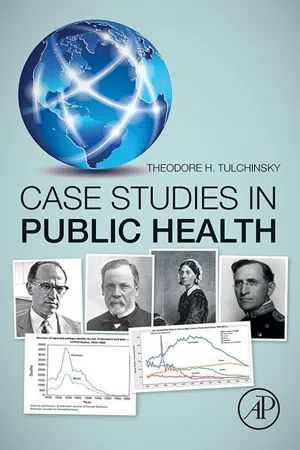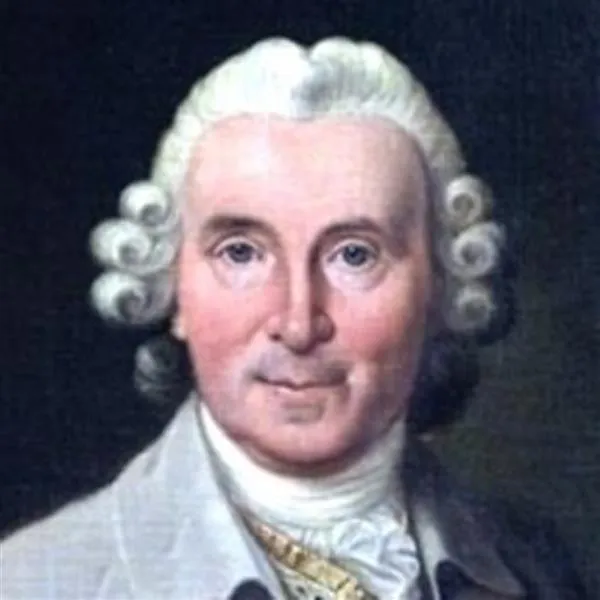Abstract
Scurvy is a disease that results from lack of fresh fruit and vegetables, now known to be caused by vitamin C (ascorbic acid) deficiency, causing symptoms of fatigue, lethargy, limb pains, swollen and bleeding gums, joint pain, shortness of breath on exertion, skin bruising, and, if untreated, death. Identified as a disease in the 16th century and widely attributed to infection, it was common among seamen with disastrous loss of life on long voyages. In 1747, James Lind, a young naval surgeon, conducted a clinical trial of comparing nutritional treatment of sailors with scurvy, which showed the cure to be citrus fruit, and reported on his finding to the Royal Society. The Royal Navy later made consumption of lemon juice mandatory to preserve the health of sailors and to allow ships to stay at sea longer. Lind’s study is considered a first in epidemiology as a case-control study opening the field of nutritional epidemiology with vital public health implications that continue today. Scurvy gradually passed from public health consciousness but vitamin C has recently attracted attention as a common micronutrient deficiency globally with dietary intake of fruit and vegetables daily, and vitamin C fortification of basic foods as public health nutritional intervention.
Background
Studies in nutritional sciences began in the early 18th and 19th centuries with identification of the basic food elements - carbohydrates, protein and fats. Revolutionary developments that enabled identification of the elements led to the development of methods of testing with chemical analysis, quantitative analysis and new scientific approaches to nutrition. Development of studies in chemistry and physiology advanced the field, which today is still dynamic and productive of information vital to public health.
The practice of nutrient supplementation of foods dates back to the year 400 BCE when the Persian physician Melanpus suggested adding iron filings to wine to increase soldiers’ “potency.” In 1831, the French physician Boussingault urged adding iodine to salt to prevent goiter. In 1912, Casimir Funk identified “vital amines” as essential trace elements for human health. With the development of nutritional sciences from the early part of the 20th century, knowledge grew rapidly of the vital role of vitamins and minerals, now called essential micronutrients, and they became part of the public health arena.
Scurvy was a common illness and cause of death for ship crews on long sea voyages during the 17th and 18th centuries. Although no scientific knowledge of the cause of scurvy existed, in 1617, John Woodall, a surgeon and author of Surgeon’s Mate, described the disease. He listed lemon juice as the cure, which was subsequently adopted by the East India Company, which started providing lemon juice for its sailors. The famed round-the-world voyage of a Royal Navy fleet of eight ships led by Commodore George Anson in 1740–44 lost a majority (145 men survived out of a total of nearly two thousand, most dying of scurvy), of the sailors who died from the “great sea plague” as scurvy was then called.
James Lind (1716–1794) was born in Edinburgh in 1716, the son of an Edinburgh merchant with family medical connections. In 1731 he was apprenticed to an Edinburgh surgeon supplemented by studies at Edinburgh University Medical School. He joined the Royal Navy in 1738 as a surgeon’s mate and in 1740 was posted to the 50-gun vessel HMS Salisbury. His major works included “Treatise of the Scurvy” published in Edinburgh in 1753, “An Essay on the Most Effectual Means of Preserving the Health of Seamen.” (1762), and “An Essay on Diseases Incidental to Europeans in Hot Climates” (1771).
On a ten-week voyage in 1746 scurvy struck 80 out of 350 sailors on the Salisbury. Lind then at age 30, with little academic education, undertook an investigation of the problem by randomly assigning 12 sailors sick with scurvy to different dietary regimens. Each group of two received a different diet of frequently recommended regimens for a two week period while Lind monitored progress of the clinical picture. One group was given oranges and lemons, others seawater, cider, vinegar, or various medications thought to be effective against scurvy. This study is recognized as the first recorded experimental randomized controlled clinical trial, which became a hallmark of general and nutritional epidemiology.
The sailors in Lind’s study who received lemon and other citrus fruits showed dramatic clinical improvement within several days, in such a way that one was able to help care for the other group of sailors in the trial who did not improve. Lind reported in his book Treatise of the Scurvy that in a short time this group was fit for duty. Lind further concluded that “experience indeed sufficiently shows that green or fresh vegetables with ripe fruit were the best remedies for it (scurvy), so they prove the most effectual preservatives against it,” and “oranges are the most effectual preservatives against the distemper.” Lind also promoted hygienic improvements in ventilation, regular bathing, changes of clothing and bedding for sailors to reduce infectious diseases including typhus.
Lind found difficulty convincing naval authorities of the importance of these findings. Captain James Cook (1728–1779), one of the greatest sea explorers of all time, took great efforts to maintain the health of his seamen on his circum-navigation voyages with ventilation and mandatory hygiene and antiscorbutic foods. During his second voyage, a companion ship, whose captain paid less attention to diet and hygiene of the sailors, experienced many cases of scurvy, while Cook’s crew members were free of scurvy. Cook documented the benefits in health of sailors on his ship as compared to the companion ship which ignored these requirements in his official logbook of the voyage.
Further efforts by experts on scurvy, such as Gilbert Blane (1749–1834) and Thomas Trotter (1760–1832), and the documented experience of seasoned sailors such as Captain Cook on the efficacy of dietary discipline in preserving the health of his crews on long sea voyages, helped convince the British Admiralty. In 1796, the Admiralty mandated daily issuing lemon juice to all sailors at sea to prevent scurvy. Application of the new dietary regulations eliminated scurvy from the Royal Navy, allowing voyages to go beyond the previous 6–8 week limit of sea time without replenishment of supplies of fresh vegetables, shore leave, or both. A naval expert of the time noted that this effectively doubled the fighting strength of the Royal Navy at sea during the Napoleonic wars of 1797–1814, in a common saying of the time that Lind, as much as Nelson, broke the power of Napoleon. In 1867, the British Parliament mandated provision of a daily lime ration to sailors in all ships of both the Royal Navy and the Merchant Navy to prevent scurvy. This resulted in the use of the term “limey” for British sailors and British people generally in America.
Lind’s study was the first clinical-epidemiologic study, and is considered the first randomized control trial (RCT). It was also the first documentation of effective intervention in a nutritional-occupational disease. Identification of an active nutritional factor led to cure and prevention of a well known clinical disease of major public heath importance. Lind anticipated the discovery of vitamins by 150 years, describing “various qualities, of which all vegetables possess one or more in various degrees, and do from thence accordingly become more or less antiscorbutic.”
Vitamin C was isolated from lemon juice in 1932 by Hungarian and British scientists. The Nobel Prize for Physiology or Medicine was awarded to Albert Szent-Györgyi for his studies of the biological functions of L-ascorbic acid (vitamin C). In 1937 the Nobel Prize for Chemistry was awarded to two scientists. Norman Haworth received the Prize for his investigations on carbohydrates and vitamin C and “for determining the structure of ascorbic acid” Paul Karrer received the Prize “for his investigations on carotenoids, flavins and vitamins A and B2”. Further studies of the nutritional and public health importance of vitamin C are ongoing. Examples of these are studies on how to enhance the nutritional value of ascorbic acid in agricultural crops, for prevention of heart disease, stroke, and cancer.
Current Relevance
Nutritional sciences in the 19th century focused mainly on calories, carbohydrates, protein, and fats. Early in the 20th century, the identification of other essential or “vital amines”, later shortened to vitamins, became part of the field of study. Lind’s demonstration that specific foods that could cure and prevent a serious disease of sailors on long voyages proved to be a prescient change in nutritional science, and pioneered the development of the vital research methods of the clinical trial.
Today, micronutrient deficiencies (MNDs) of vitamins and minerals that are necessary for health, especially for pregnant women, children and adults, are considered to affect some 2 billion persons globally. Vitamins are organic compounds that are essential in small amounts for specific functions and health of the body, such as growth, reproduction, and resistance to infection. They differ in physical and chemical properties and in biological functions. Vitamins function in highly specific metabolic processes. They cannot be synthesized in sufficient quantity by the body alone, and must therefore be obtained from the diet, from fortified foods and supplements and, in the case of vitamin D, from skin exposure to the sun. Vitamin C is readily available in diets including regular and adequate amounts of fruit and vegetable intake at all ages but this is not universally available nor part of all dietary cultures.
Many diets in low-, medium-, and high-income countries are in fact deficient in more than one of these needed elements and, along with trace minerals, should be added to foods commonly eaten by most people such as flour, rice, cooking oils, milk, salt, and sugar. Fortification of common basic foods has become increasingly justified in science and in practice over the past century with successful experience in fortification of basic foods with iodine, iron, vitamin B complex including folic acid, vitamin D and others to prevent many micronutrient deficiency conditions. Moreover, supp...

